Background
It is essential for brands to find unique ways to gain a competitive advantage by differentiating themselves from their competitors. The Zion & Zion market research team is engaged in an exclusive in-depth series of studies to understand how consumers perceive the personalities of top U.S. brands. This article is the fifth in our new series on 45 major brands in 15 industries (see tables 1 and 2). In this series, we analyze how top brands are perceived across three key brand personality scales: Aaker’s (1997) classic five dimensions of brand personality, Freling, Crosno, and Henard’s (2011) brand personality appeal dimensions, and Haji’s (2014) negative brand personality dimensions. In the first four articles of our series (see here for the first article in the series), we investigated how the brands score on each of the three scales, what clusters they form, and how brand personality drives brand outcomes. In this article, we explore the topic of negative brand personality in more depth. In future articles, we will perform deep-dives into the 15 industries and more.
Table 1. Industries Included in this Study
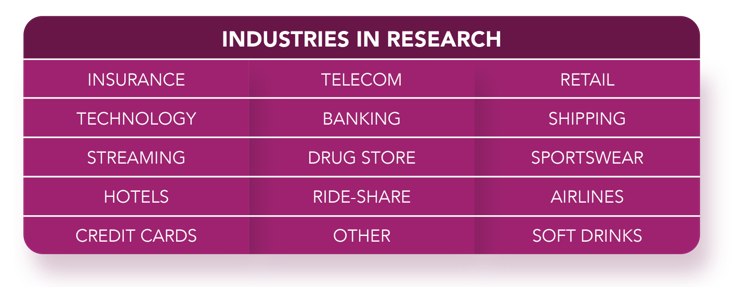
Table 2. Brands Included in this Study
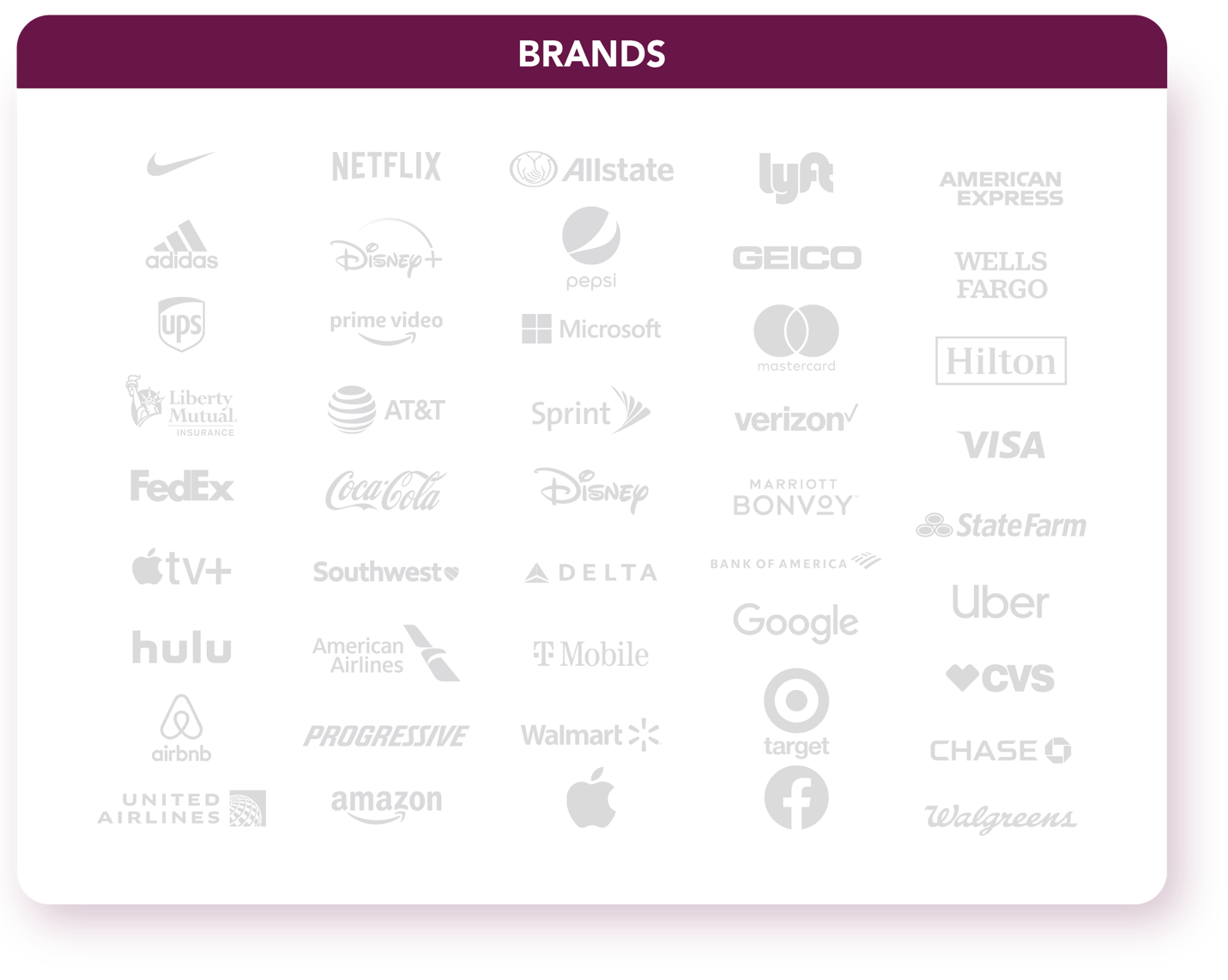
Executive Summary
The Zion & Zion research team sought to gain a deep understanding of the brand personalities of 45 major brands in the U.S. The brands were selected based on established brand value and industry leadership rankings. We surveyed 9,309 adults, 18 years of age and up. Each respondent was asked about one of the brands. Respondents in our survey were also asked to rate their familiarity with each brand on a scale of 1 to 7, with 1 being very unfamiliar and 7 being very familiar. Only respondents who answered with at least somewhat familiar (5 or higher) were retained for the study which resulted in a data set of 6,444 responses.
In this article, we investigate the dark side of branding. For any brand, there may be a perception that the firm is not a positive force for the consumer or in the world. It would be shortsighted to only look at the degree to which consumers hold generally favorable traits about these brands in their mind. Brand personality research and practice has, to date, ignored this important aspect of brand effectiveness, but our large database examines the Negative BP using the scale developed by Haji (2014). In the Negative BP scale, the dark side of consumer perceptions is captured in 4 dimensions: egotistical, boring, socially irresponsible, and crude. Each dimension consists of multiple traits as shown in table 3.
Table 3. Structure of the Negative Brand Personality Scale
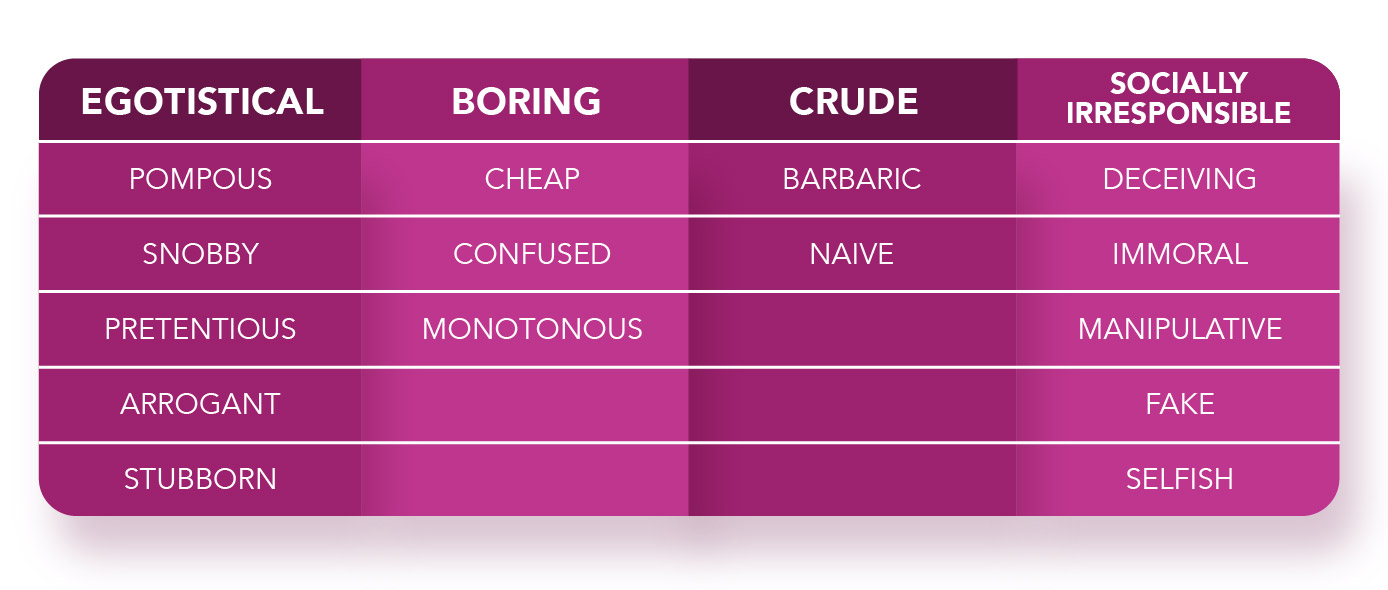
Negative Brand Perceptions
The second article of our series presented the scores for each of the 45 leading brands on the Negative Brand Personality Scale (NegBP). To recap, NegBP is measured on a 7 point scale, where high values indicate that the brand has a high level of that dimension or facet, i.e. that the brand is perceived as exhibiting a very negative personality. In order to look across all 45 brands at the four dimensions of NegBP, we use a radar chart approach. In a radar chart, each brand is represented here by a 4-sided shape. The higher the brand scores, the larger the shape. Looking at the radar chart for our 45 brands (see figure 1), we see that Facebook and Wells Fargo are perceived in a more negative light than all other brands. We also see that most brands have very low levels of negativity associated with their personalities.
Figure 1. Radar Chart of Negative Brand Personality Scores
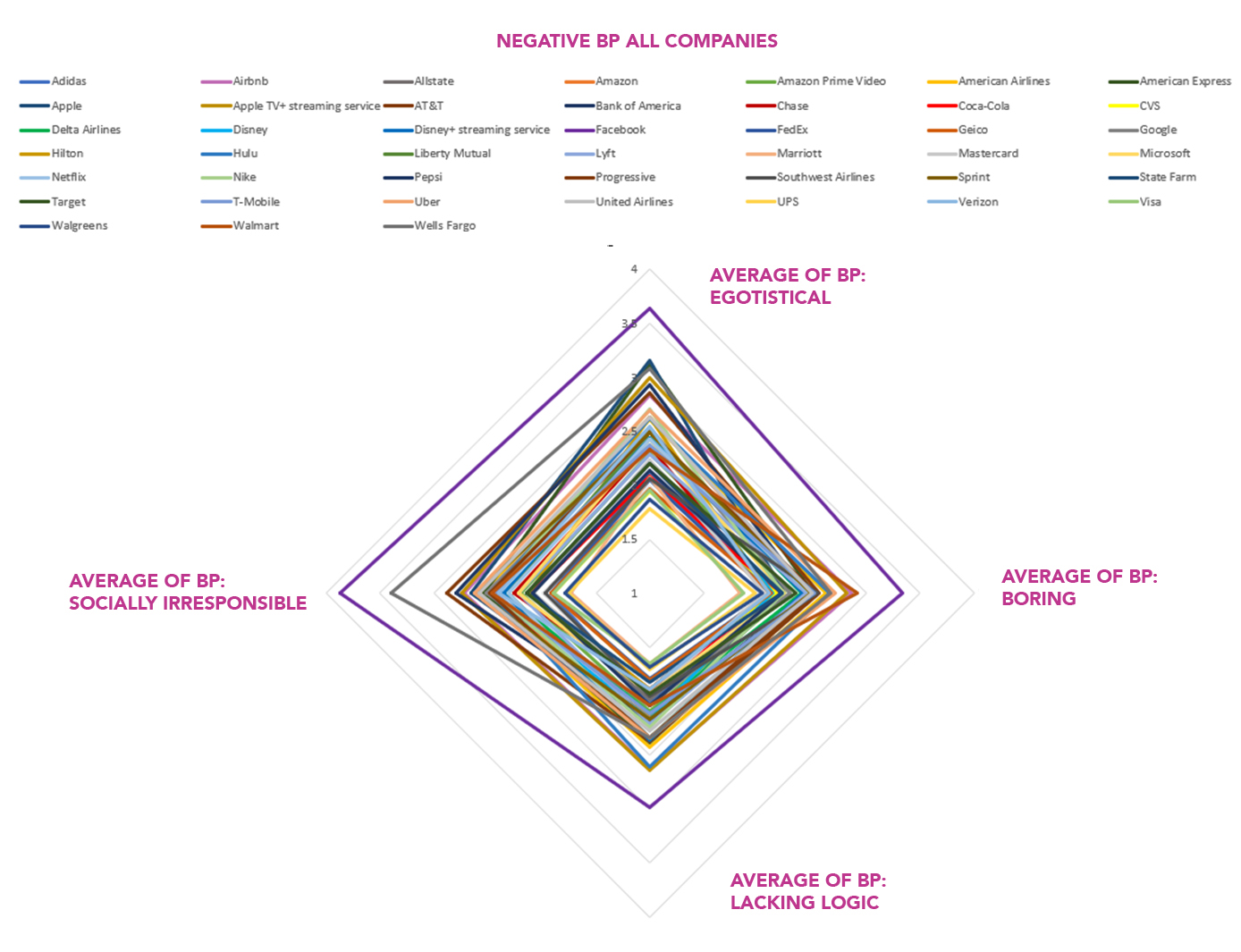
Negative Perceptions drive brand performance
Seeing the low levels of NegBP across the 45 brands, it might seem like negative perceptions are not an issue for America’s leading brands. That interpretation would be highly misleading. In the fourth article in our series, we ran a regression analysis to assess what impact each of the 11 brand dimensions in our database have on brand performance. We can now compare the impact of the 4 NegBP dimensions to the impact of the 7 other dimensions, all 7 of which are painting a positive light for the brands.
The result of this regression analysis shows for each of the 11 dimensions what impact scoring one standard deviation higher on the dimension has on brand performance (see table 4 for the results and article #4 for the detailed look at how we measure brand performance). Looking at this result, it immediately jumps out that three of the four dimensions of negative brand personality (NegBP) make it into the top five dimensions in impact, and the fourth dimension of NegBP (i.e. Boring) still beats out originality, sophistication, excitement and ruggedness, coming in 7th of the 11 dimensions. Being egotistical or socially irresponsible has negative coefficient values. This negative coefficient indicates that being seen as egotistical or socially irresponsible lowers brand performance substantially. On the other hand, being seen as crude or boring actually improves brand performance. The high ranking of the impact of NegBP underscores the importance of understanding the dark side of brand personality. On average, the four dimensions of NegBP have an impact of 0.16, compared to an average of 0.12 for the classic Aaker brand personality dimensions (i.e. Competence, Sincerity, Sophistication, Excitement, and Ruggedness), and also an average of 0.12 for the two BP Appeal dimensions (Clarity and Originality). This means that NegBP has 1/3 higher impact than the standard approaches for assessing the personality of brands.
Table 4. Regression analysis results, Dependent Variable = Brand Performance
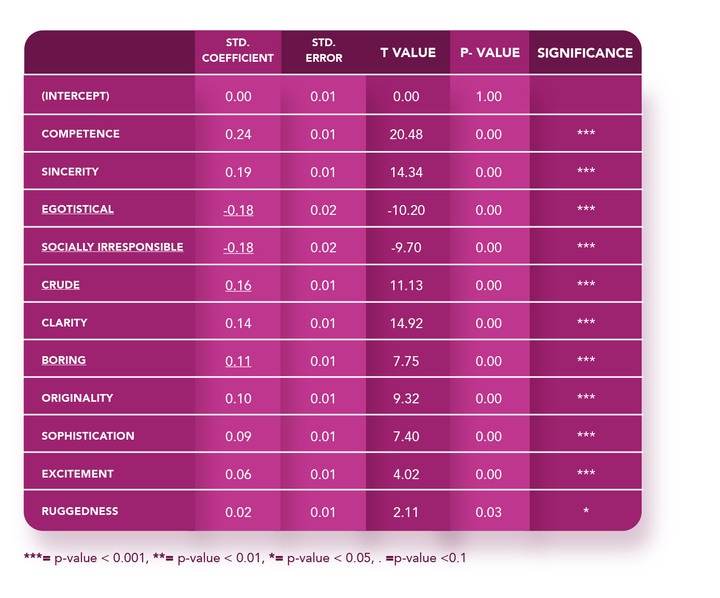
The regression analysis therefore highlights that while the 45 major U.S. brands have low scores on NegBP, small variations on how negatively consumers see each brand have outsized impact on the performance of those brands.
Interpreting The Data
When interpreting the data shown on the table, it is important to keep in mind that each brand has its own unique profile that needs to be understood in relation to the brand’s positioning and target segment. It would be misleading to see this as a competition where a brand is strong only if it scores high on all appeal facets and low on all negative facets. Furthermore, the ranking of brand personality dimensions and the level of impact for each dimension can vary between industries. We will dive into the regression analysis for each industry later in our series. Brands can also perform well if they have middling scores on all of these dimensions, so this is not a hard and fast judgement, but brands would generally not like to be seen as scoring both low on appeal and high on negative facets. The caveat is that being perceived negatively by some consumers may be acceptable if the brand’s target segment sees the brand in a positive light.
Putting the Data to Work
This article is the fifth article in our multi-part series, where we will look at each of the brands in 15 industries in more detail. Later in this series, we will look at how each brand’s profile matches up with its competitors, what facets are key for market success in each industry, and we will also evaluate a series of industry-specific questions.
The Zion & Zion research team encourages marketers to look at how they want their brand to be viewed by consumers and look for ways to distinguish themselves from the pack. In our series, we show that by picking and choosing specific areas to improve, brands can distinguish themselves from the pack. Our series shows how such differentiation can help brands to gain a competitive advantage.
